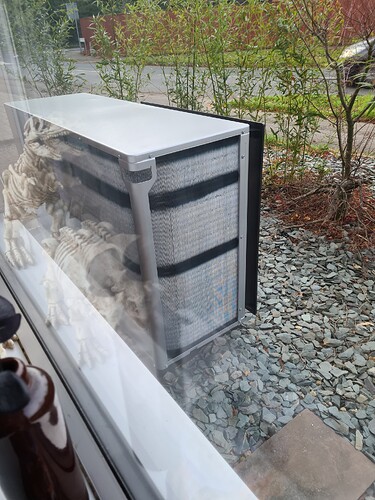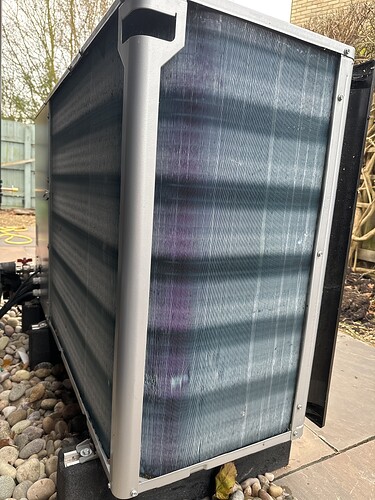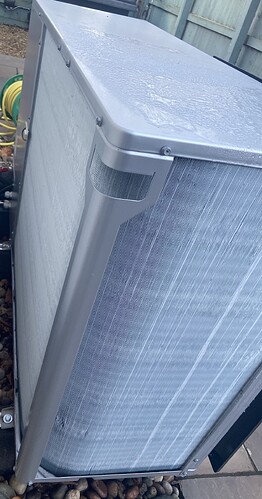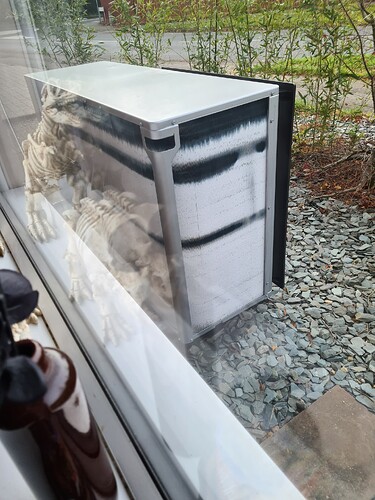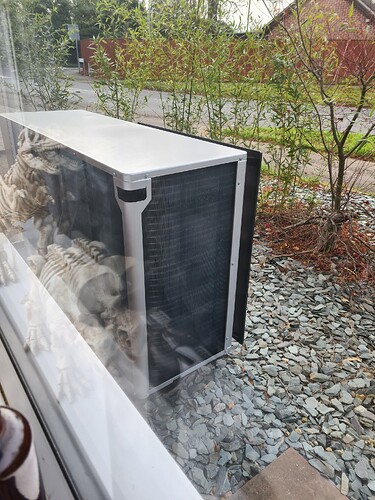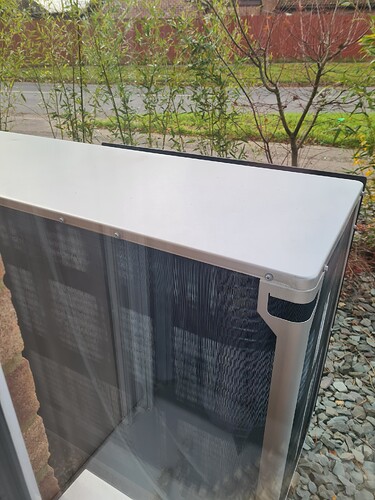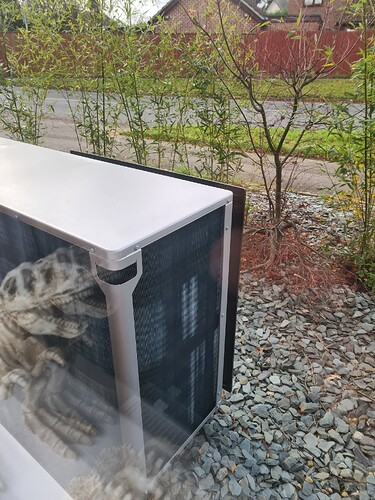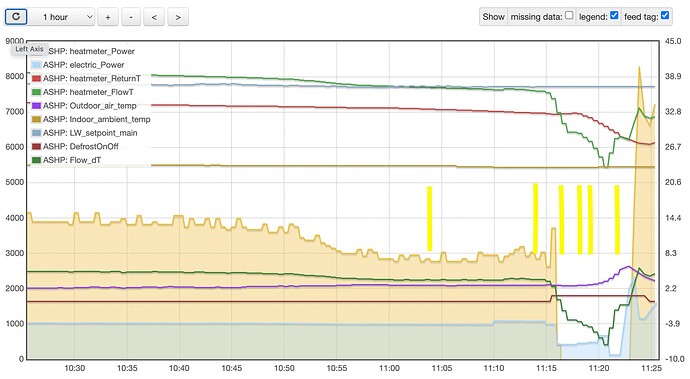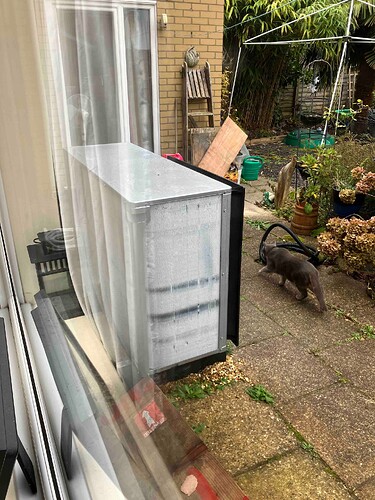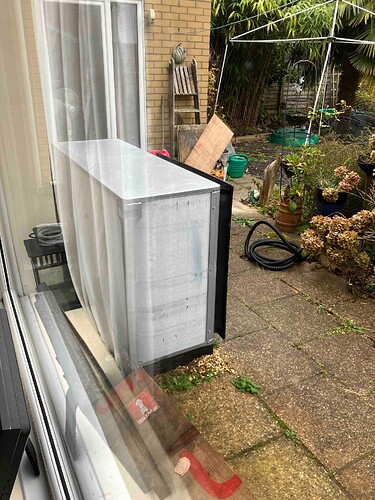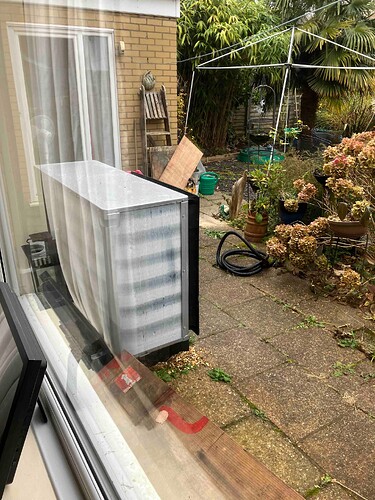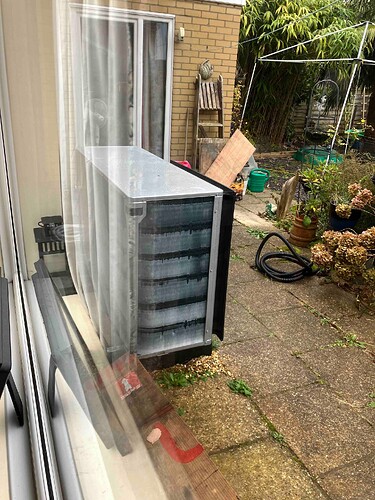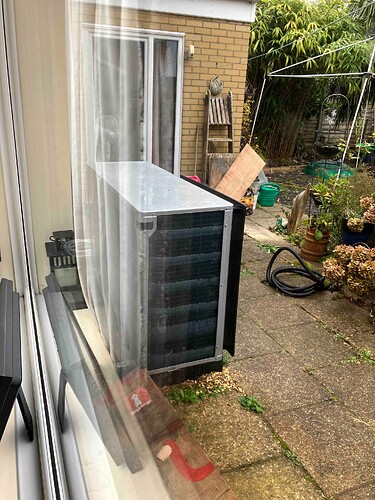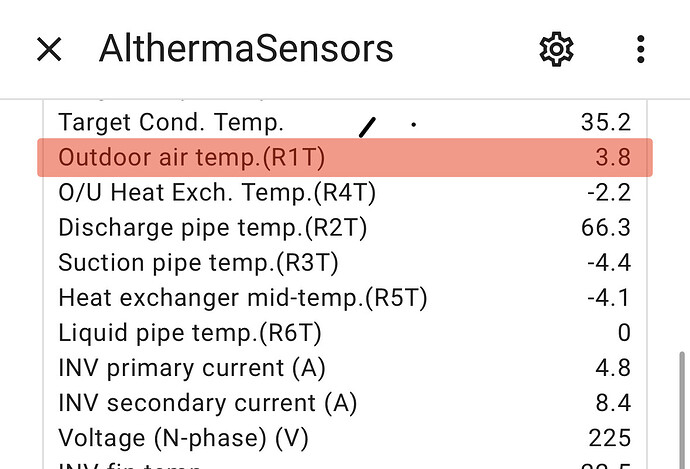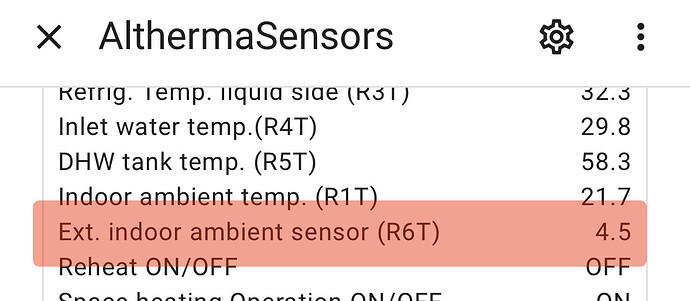Hi Matt
I figured I’d take the hint from the Forum code and message you instead, not sure the rest of the world needs to hear us banging on about rads unless we get a different result at some point! ![]()
Looking at my rad output at the current 34C avg flow temp and rad/room dT as per schedule (18/21), they would output 3.8kW, so yes, at that flow temp they’re underrated for the heat output of the ASHP. Which is why it cycles, right? It can’t keep the flow temp down given its power output, so it has to stop. But if I had bigger rads, I’d be putting more heat in, so the room temps would rise and the output would go down anyway! If the pump’s too big at these temps, it’s too big…
Looking at the kWh output averaged over the last 24 hrs, the requirement is about 2.9kW continuously, which is why it’s too big!
Settings:
- LWT control only (no stat used); 15/26, -7/50 (we’ll see how that works out!)
- Fan Coil units selected, as at installation; I note that Target Out/In Flow dT from the data is 5C, and the HP is maintaining that pretty well once it gets going
- -2C LWT setback 22.30-6.30, seems to save a bit but require a hump @ 6.30
There are shedloads more settings, happy to send you my current config dump from the MMI, which is the only way to compare forensically. Or you could send me yours and I can run a Diff on them, and tell you what the differences are - the [n, m] installer settings are impenetrable unless you’re actually working on one!
How much effect are the Speed Comforts having? I’m considering them as an option if the HP really can’t manage 9kW @ 50C @ -2. Are they as quiet as you’d hope? @Timbones analysis of the increased output was pretty hopeful - 25% more @ 45C is very handy.
Cheers
John
